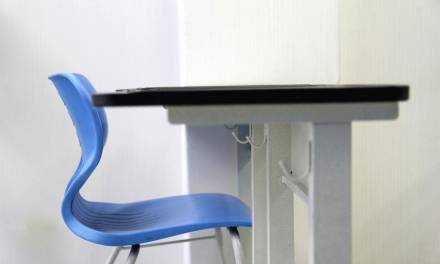The children’s commissioner, Anne Longfield OBE, has issued concern over the use of school isolation booths, according to the Guardian.
Ms Longfield described “horror stories” as she visited isolation units in schools throughout the UK.
Some pupils described the experience as “distressing and degrading.” We reported on social media last week that some believe isolation harms mental health.
How do you think isolation units in schools should be used to improve pupil behaviour and help students reach their potential? Let us know in the comments section below.
Isolation in schools
Under Section 89(1) of the Education and Inspections Act 2006, maintained schools should have a behaviour policy regulating the conduct of pupils. This policy should set out the measures aimed at promoting good behaviour, as well as self-discipline and respect.
The policy should also set out how the school will prevent bullying and ensure that pupils complete work assigned.
One of the methods used to achieve this is isolation:
Isolation rooms are calm, orderly environmnets with a clear routine. Behaviour is better in schools that have them.
New age of isolation
Schools may choose to use in-school units, whether that be to provide additional support to vulnerable pupils, or as a sanction to remove pupils with challenging behaviour from the classroom.
Our guidance is clear, however, that use of isolation must comply with pupil safeguarding and welfare requirements. Pupils are not to be kept in isolation longer than it is necessary and their time spent there must be as constructive as possible.
Tom Bennett, the government’s behaviour tsar for England, told the Guardian that increasingly schools are using removal rooms so children could learn in a safe, calm environment:
They aren’t isolation rooms – I’ve never seen a school leave a child unattended. They’re supervised, and more often than not, are accompanied by other students.
Claims that these are isolation spaces is nonsense. These are safe spaces, run by adults.
The children’s commission on isolation
The children’s commissioner has been conducting research to find out how widespread the use of school isolation is and what kind of children are affected. This investigation comes in response to mounting discontent among parents and mental health campaigners about the practice.
I get lots of anecodotal evidence, from lots of kids and some parents, telling me about the awful experience they have had in isolation.
I get to hear about children who have spent long periods of time in isolation rooms. They have told us that they find it distressing and degrading. They said they feel like they are being warehoused in isolation, and thy say sometimes it’s for days or weeks at a time.
I was told of a school where they were converting a toilet section into isolation booths – and the comment there was it was very handy because they had already got the cubicles.
More pupils in isolation?
Corporate Office Furniture, which sells isolation booths, said about 50 schools had acquired units from him over the last five years.
It’s not cruel. These people who say it’s wrong, they need to spend a day in a school and see actually what these teachers have to go through. The teachers have not signed up to being abused.
How can the use of isolation be improved?
The Guardian says that many people in the sector believe distinction should be drawn between isolation rooms and the use of confined booths, in which children have to face the wall and cannot communicate with each other.
Another challenge faced is being stuck between the needs of challenging pupils and those who want to work without distraction.
However, concerns have also been raised about the productivity of children in isolation. Longfield continued:
Some children have said they even just sleep in the booths. All kids have a right to a good education and if they are being removed from a classroom and put into isolation they are not getting their education.
How EDLounge can improve learning in isolation
Ultimately, at EDLounge we believe that every child has a right to education, and feel that provisions can be made to ensure the use of isolation in schools is effective.
EDLounge was originally designed to prevent 34 students from being permanently excluded from one school over a term in 2008. It worked successfully and is now a powerful learning resource for pupils in isolation units. The service has 11,000 lessons available, including specific lessons to improve behaviour.
As it is online, it is motivating for the pupil to complete activities, and the built-in metrics ensure that teachers can see whether learning has been completed and how time is being spent. For more information on our isolation service, EDInclude, click here.
EDLounge Ltd has been assessed by OFSTED. The OFSTED report on EDLounge Ltd (2019) states:
They provide personalised coaching and one-to-one support that enables learners to make at least the progress of which they are capable.
To request a demonstration or to get in touch with a member of our team, contact us here or call 01909 568338.









